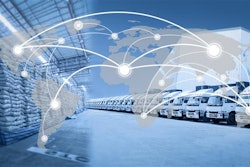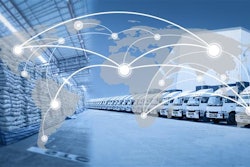
There is plenty of hype around the edge. Most companies seem to have different views as to what the edge means to them. About the only level of consensus is that “it isn’t in the data center.” Beyond that, definitions can range between a rack of fully configured servers featuring Intel Xeons, a quadcore Arm SoC residing in a gateway and anywhere in between.
At some point, the world of cloud connectivity, resources and IT processes meets a point beyond which systems must meet stringent real-time, security, reliability and safety requirements. As factories, buildings and even roads start to become autonomous systems of different descriptions, the impact of system failure increases from the loss of business revenue and productivity to the loss of life.
So, what’s the future for edge technology? It’s mission-critical edge, an edge framework to deliver critical safety and security to a variety of industries. The industrial market, along with others, is particularly interested in this edge paradigm. As Industry 4.0 moves away from the cloud and closer to the edge due to speed, latency and the amount of data increasing, deploying mission-critical edge computing can help reduce development costs and risk while enabling the resulting applications to deliver greater performance, safety, security and flexibility for operators and end users. Industrial leaders have turned to collaborative robots (cobots) to assist with their digital transformation goals. Introducing cobots into a workspace teeming with a human workforce. The mission-critical edge can address how cobots interact with humans, allowing for real-time implementation of complex decisions in co-working environments.
What is the cloud’s role in the future of edge technology?
Cloud companies are looking beyond the IT market. There is still growth for IT use cases, but we are reaching the point where the companies that are going to embrace a public cloud have embraced it, and those that haven't are pursuing an alternative strategy. For the cloud companies to address non-IT applications, they can promise the power of the cloud to deliver insights on data fortwo value propositions:
1. Predictive maintenance to improve system uptime.
2. Improving the quality, and therefore, value per unit manufactured.
Unlike the somewhat homogenous world of IT infrastructure, the nearer the endpoint, the more diverse the set of variables:
● Connectivity. Wired, wireless, secure, insecure, point to point, bus and ring architectures.
● Age. Equipment can be deployed for 10-plus years. This is more of a world of “if it ain't broke, don’t fix it” as opposed to the ROI in the cloud where hardware upgrades can provide a positive payback in 2-3 years. This also means legacy hardware and software.
● Suppliers. Diversity of options has historically been a strength as enterprises are presented with a huge choice of platforms and that has galvanized huge innovation in the hardware ecosystem. However, all these systems are managed in different ways.
IT and OT: No longer oil and water
The information technology (IT) and operational technology (OT) worlds have been separated for years. The IT companies have focused on satisfying the IT buyer almost forgetting about the OT buyer. When they do approach the OT buyer, though, very little has been done to educate them on the value of solutions. Instead, they’re scaring potential buyers with the value proposition around automated delivery of new system functionality, the ability to apply processing to data in seconds and use of artificial intelligence to improve operational functionality. The OT world is not well understood and the opportunity there is underestimated. The operators of the OT networks like “same and reliable”:
● Deterministic real-time performance
● Same systems and applications
The industry is starting to see collaboration between companies in each of these areas. Fundamentally though, there is a need for a sophisticated bridge between these two worlds. The cloud companies are a valuable ally to deliver the backend services to Industrial Internet of Things (IIoT) enterprises, but they need this bridge to manage and land cloud services without spooking the operator of the network inside the factory. Merging IT and OT networks in demanding industrial environments, where robots often work closely alongside humans, has previously brought challenges of guaranteeing real-time (less than 1 millisecond) performance and meeting security demands. Clearly this problem needs to be solved at the factory floor. This bridge must:
● Maintain separation between the IT and OT networks
● Be able to deliver data insights in the form that the factory understands (PLC X, perform function Y)
“Whatta lotta data”
A smart factory can produce about 5 petabytes of data a week. A relatively simple automotive vehicle can produce 0.3TB of data a day with more of the autonomous levels (Levels 4 and 5) predicted to produce hundreds of terabytes of data a day. As we move to autonomous systems, there is a need to ingest data from a range of sensors, fuse it, analyze it and then take a decision inside a tight time window. Taking extra time to decide is not an option. This time window can be less than a millisecond for programmable logic controllers, hundreds of microseconds for industrial robots and tens of microseconds for computer numerical control (CNC) (lathes, etc).
The opportunity for a melding of the worlds
Fundamentally, these worlds need to and will come together. The solution needs a platform that delivers the right level of abstraction for a common framework to embrace the “messy” edge and virtualization to isolate networks and applications.
With this, companies can look forward to an environment that enables them to upgrade hardware, preserve their investment in software and to land new services.



















